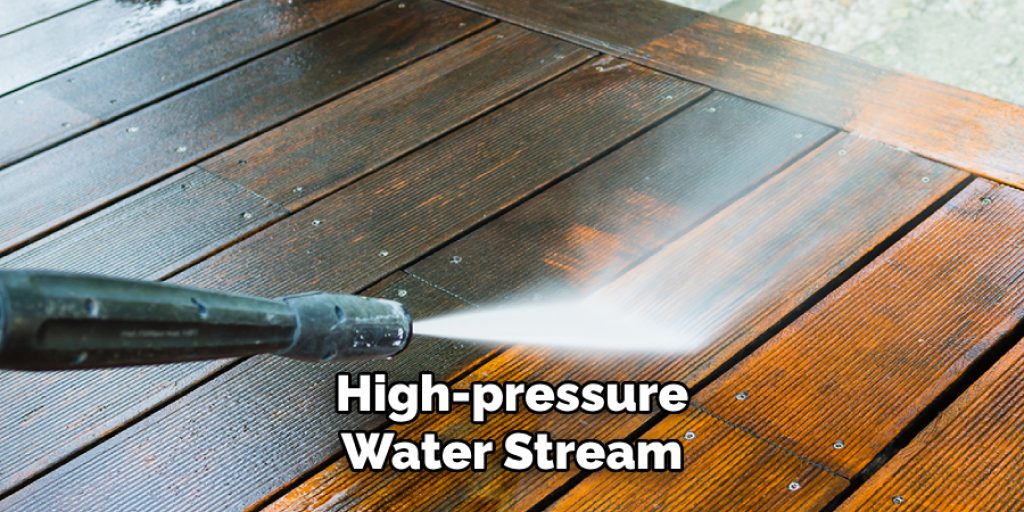How to Clean Hull of Boat
Cleaning the hull of a boat is an essential maintenance task that not only enhances the vessel’s appearance but also improves its performance on the water. Over time, hulls can accumulate dirt, algae, and barnacles, which can affect speed and fuel efficiency. Proper cleaning helps prevent damage to the hull’s materials and ensures that your boat remains in optimal condition.

In this guide on how to clean hull of boat, we will explore effective techniques and recommended products to help you achieve a clean, smooth hull, ensuring your boat is always ready for your next adventure.
What is the Hull of a Boat?
Before we dive into cleaning techniques, it’s essential to understand what the hull of a boat is and why it needs cleaning. The hull refers to the bottom part of a boat that makes direct contact with the water. It is typically made of different materials such as fiberglass, aluminum, or wooden planks and plays a critical role in the vessel’s buoyancy and stability.
As the boat moves through the water, the hull can accumulate various types of fouling, including algae, barnacles, and other marine organisms. These buildups can not only affect performance but also cause damage to the hull if left unchecked. Hence, regular cleaning is crucial to maintain your boat’s seaworthiness.
Needed Materials
To clean the hull of your boat, you will need a few essential materials, including:
Boat Cleaning Solution:
Choose a specialized boat cleaner that is safe for your hull’s material and the environment. Avoid using household cleaners, as they may contain harsh chemicals that can damage the hull’s surface.
Soft-Bristled Brush:
A soft-bristled brush is gentle enough to clean your boat’s hull without causing scratches or other damage. Make sure to choose a brush with synthetic bristles, as natural bristles can become too soft after prolonged exposure to water.
Marine Sponge:
Use a marine sponge for areas that require more delicate cleaning or are difficult to reach with a brush.

Bucket:
Fill a bucket with warm water and your chosen boat cleaner solution for easy application.
Water Hose:
You will need access to a water hose or faucet to rinse off the cleaning solution and dirt from the hull.
8 Step-by-step Guidelines on How to Clean Hull of Boat
Step 1: Prepare the Area
Before you begin cleaning the hull of your boat, it’s important to prepare the area to ensure an efficient and safe cleaning process. Start by choosing a suitable location, such as a flat and stable surface, preferably away from direct sunlight, to prevent the cleaning solution from drying too quickly. If possible, use a boat trailer or lift to elevate the vessel, giving you easier access to the hull.
Additionally, ensure that you have all your cleaning materials within reach, and lay out protective coverings or tarps to catch any debris or runoff from the cleaning process. This preparation will help keep both your workspace and the environment clean while you tackle this important maintenance task.
Step 2: Rinse the Hull with Water
Once you have prepared the area, the next step is to rinse the hull of your boat thoroughly with water. Using a water hose, begin by spraying the hull from the top down, allowing the water to wash away loose dirt, debris, and any marine growth. Focus on areas that may have a higher build-up of algae or barnacles, as this will help loosen stubborn residues.
Be sure to rinse both the sides and bottom of the hull, ensuring that all surfaces are wet before applying the cleaning solution. This initial rinse will create a clean slate for the next step and enhance the effectiveness of the boat cleaning solution.
Step 3: Apply the Boat Cleaning Solution
Using your prepared bucket of warm water and boat cleaning solution, dip your soft-bristled brush into the mixture and begin scrubbing the hull. Work in small sections, starting from the top and gradually moving down to maintain efficiency. Be sure to cover all areas of the hull, including hard-to-reach spots such as around propellers or inside grooves.

Note: If you are using a specialized cleaner to remove tough stains or marine growth, follow the manufacturer’s instructions for dilution ratios and application methods.
Step 4: Scrub with Gentle Pressure
As you work your way through each section of the hull, remember to use gentle pressure when scrubbing. Avoid applying too much force, as this can cause damage to the hull’s surface, especially if it is made of a softer material like fiberglass. The goal here is to remove any buildup while being mindful not to harm the hull’s integrity.
It’s also important to keep the hull wet as you clean, so make sure to regularly dip your brush in the cleaning solution and rinse it off with water when necessary.
Step 5: Use Marine Sponge for Delicate Areas
For more delicate areas of the hull, such as around the waterline, vents, or intricate details, it’s best to use a marine sponge. Dip the sponge into the cleaning solution, ensuring it is adequately saturated, and gently scrub the sensitive spots where the soft bristles of a brush may not reach effectively.
The marine sponge is designed to be gentle on the surface while still providing enough scrubbing power to remove any light fouling or stains. As you clean, be cautious not to press too hard; the goal is to lift any grime without scratching or damaging the hull’s finish. After scrubbing, rinse the sponge frequently to avoid spreading dirt back onto the surface.
Step 6: Rinse Off the Cleaning Solution
Once you have scrubbed all areas of the hull and removed as much fouling and buildup as possible, it’s time to rinse off the cleaning solution. Using your water hose or a bucket filled with clean water, begin rinsing from the top down once again. Be sure to remove all traces of the cleaning solution, as any residue left behind can damage the hull over time.
It is also a good idea to use a high-pressure nozzle on your water hose for this step, as it can help dislodge any remaining debris more efficiently.
Step 7: Repeat if Necessary
Depending on how much buildup was on your boat’s hull, you may need to repeat the cleaning process one or two more times. If there are still spots or stains that have not been removed, use a specialized cleaner for those areas and follow the same steps as before.

Once you are satisfied with the cleanliness of your boat’s hull, give it a final rinse to remove any remaining debris or residue from the cleaning process.
Step 8: Dry and Inspect
After properly rinsing off all traces of the cleaning solution, allow your boat’s hull to dry completely before inspecting it for any missed spots or signs of damage. Use a clean cloth to wipe down the surface and ensure that no dirt or debris is left behind.
If you notice any scratches, chips, or damage to the hull’s finish during the cleaning process, be sure to address them promptly to prevent further deterioration. With proper care and maintenance on how to clean hull of boat, your boat’s hull will not only stay clean but also maintain its integrity and longevity.
Frequently Asked Questions
Q: Can I Use Household Cleaning Products to Clean My Boat’s Hull?
A: It is not recommended to use household cleaning products on your boat’s hull, as they may contain harsh chemicals that can damage the surface. It is best to use specialized boat cleaning solutions that are safe for marine environments.
Q: How Often Should I Clean My Boat’s Hull?
A: It is recommended to clean your boat’s hull at least once every season or whenever you notice a significant buildup of marine growth or staining. Regular maintenance will help prevent long-term damage and keep your vessel looking its best.
Q: Will Cleaning the Hull Affect the Boat’s Performance?
A: Keeping the hull clean can actually improve your boat’s performance by reducing drag caused by fouling and buildup. Additionally, regular cleaning can also help maintain fuel efficiency and prevent costly repairs down the line.
Q: Can I Use a Pressure Washer to Clean My Boat’s Hull?
A: While it may seem tempting to use a pressure washer for quicker and more efficient cleaning, it is not recommended. The high-pressure water stream can cause damage to the hull’s surface, especially if it is made of softer materials like fiberglass. Stick to using a soft-bristled brush and marine sponge for best results.

Conclusion
Cleaning the hull of a boat is an essential task that should be done regularly to keep your vessel in good condition. By following these steps on how to clean hull of boat and using the right materials and techniques, you can effectively remove dirt, grime, and marine growth from your boat’s hull without causing any damage. Remember to always use gentle pressure when scrubbing and rinse off all traces of the cleaning solution thoroughly.




